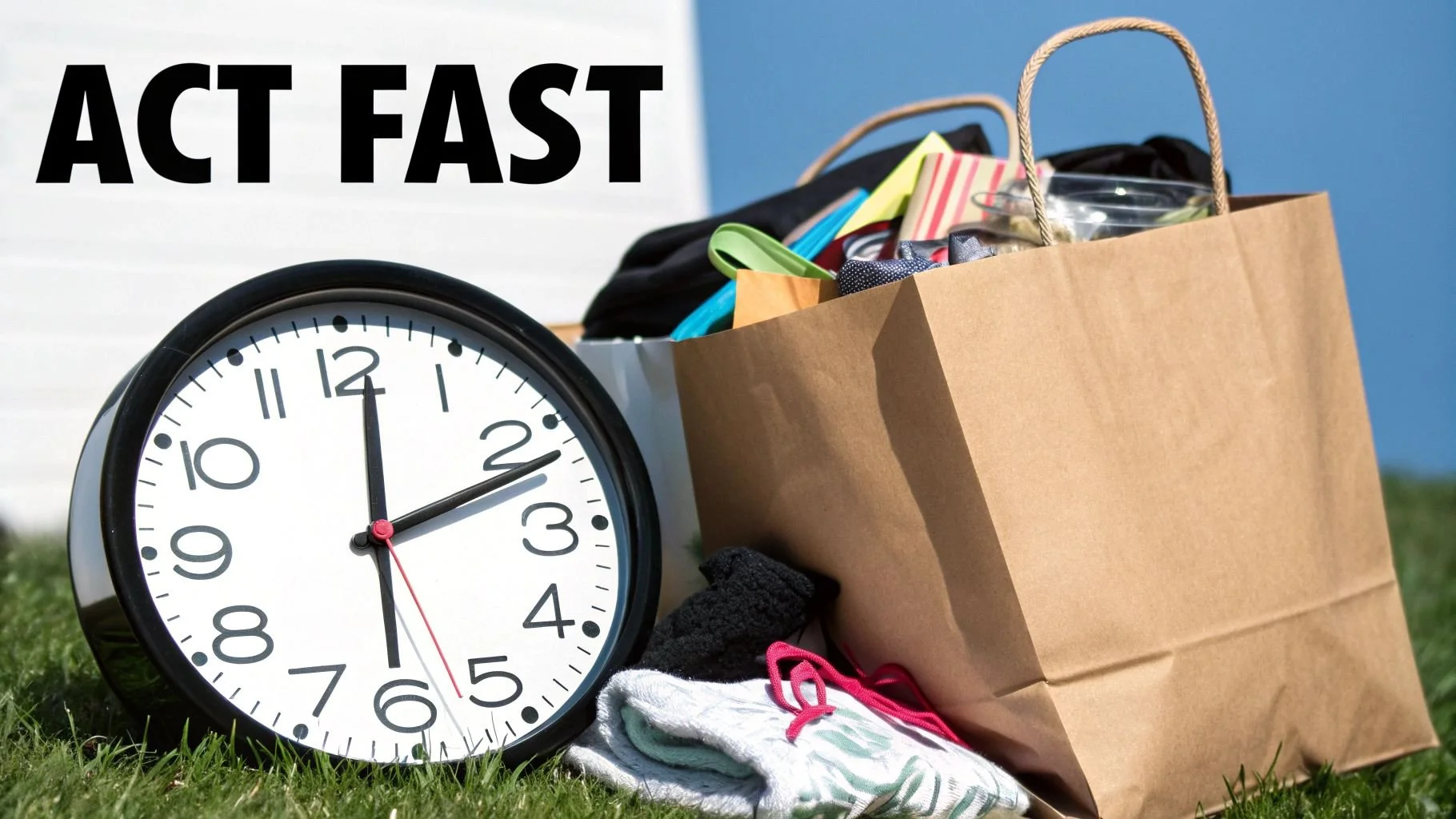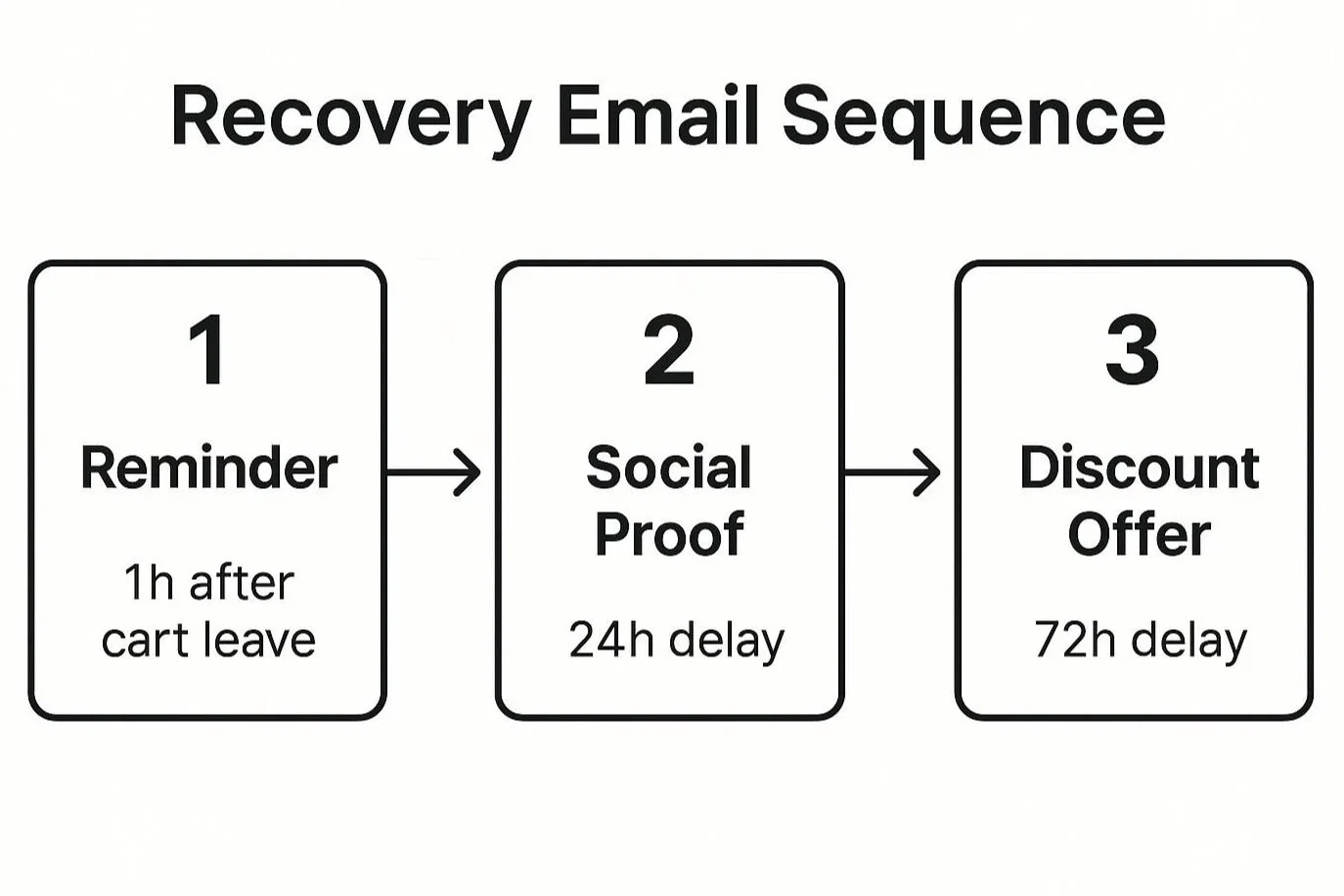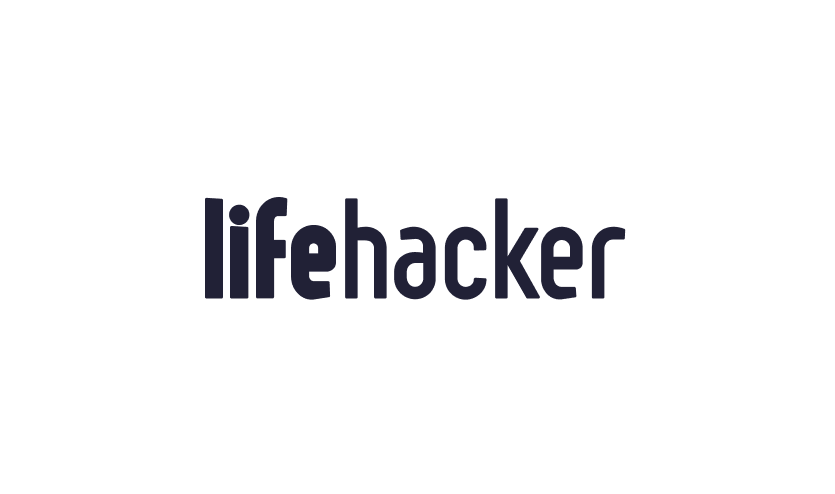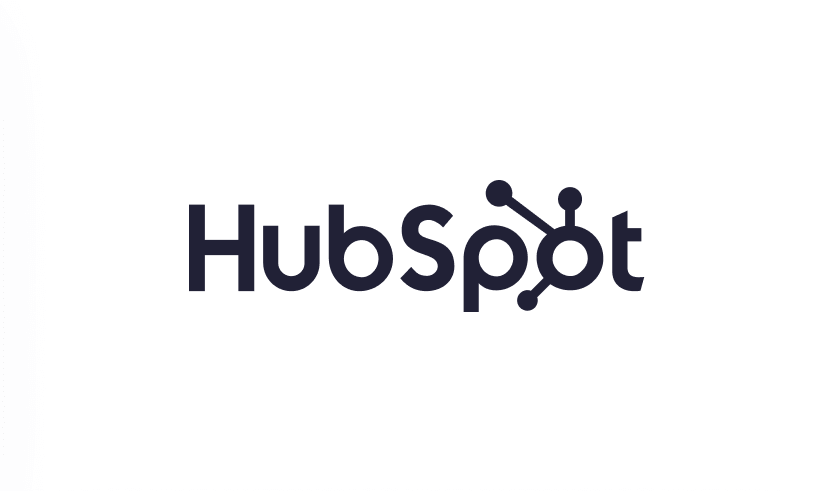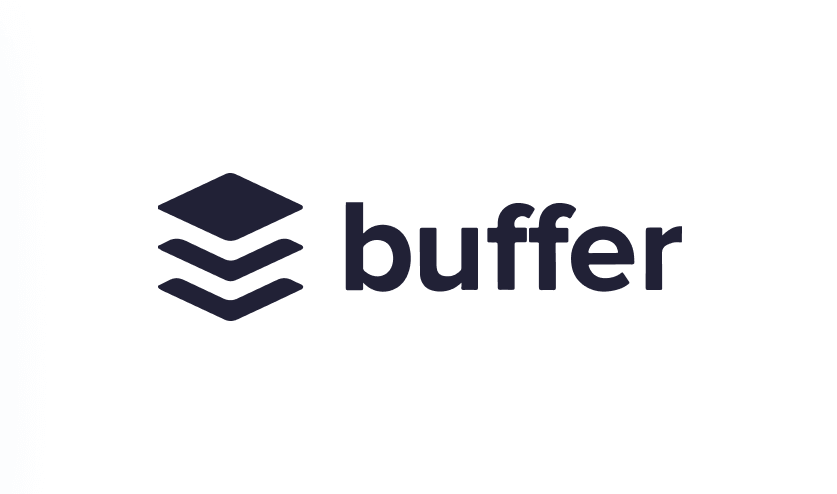Effective Abandoned Cart Email Templates to Boost Sales
Stop Leaving Money on the Table: Recapture Lost Sales with Abandoned Cart Emails
Abandoned carts cost you money. Reclaim lost revenue with effective abandoned cart email templates.
This article provides seven proven templates, curated by Chase Dimond, to win back customers and boost sales. Learn how to use simple reminders, discounts, social proof, urgency, personalized recommendations, problem-solving, and multi-touch sequences to convert abandoned carts into completed purchases. These abandoned cart email templates will give you the tools to recover lost sales and increase your bottom line.
1. Simple Reminder Template
The Simple Reminder abandoned cart email template is the cornerstone of any effective cart recovery strategy. It serves as a gentle nudge to customers who have added items to their online shopping cart but left without completing the purchase. This approach relies on a clean, minimalist design and clear, direct messaging, reminding shoppers of their forgotten items without overwhelming them with aggressive sales tactics or complex offers. This makes it an ideal starting point for any business venturing into abandoned cart email marketing. Its simplicity is its strength, allowing for high deliverability rates and quick implementation. If you're looking for effective abandoned cart email templates, this is a foundational option to consider.
This template operates on the principle that many cart abandonments are unintentional. Customers might get distracted, encounter technical issues, or simply decide to purchase later. A simple reminder email acts as a helpful prompt, bringing the abandoned items back to their attention. By providing clear product images and descriptions, along with a prominent "Complete Purchase" call-to-action (CTA) button, the email makes it easy for the customer to return to their cart and finish the transaction. This streamlined approach focuses on providing a seamless customer experience and facilitating a quick return to the checkout process.
Successful implementations of this template can be seen across major e-commerce platforms. Amazon, for example, utilizes basic cart reminder emails that effectively recapture lost sales. Similarly, Target's "Saved for Later" notifications gently remind customers of items they've shown interest in, while Warby Parker's clean reminder emails maintain a consistent brand experience while prompting purchase completion. These examples demonstrate the effectiveness of simplicity in abandoned cart email marketing, proving that a straightforward approach can yield significant results.
Actionable Tips for Implementing the Simple Reminder Template:
Timing is Key: Send the first email within 1-3 hours of cart abandonment, while the items are still fresh in the customer's mind. This maximizes the chances of recapturing their attention and converting the sale.
Visual Appeal: Use high-quality product images to remind customers of what they're missing. Clear, enticing visuals can significantly influence their decision to return to their cart.
Concise Subject Lines: Keep subject lines under 50 characters and focus on clarity. Examples include "You left something behind," "Don't forget your items," or "Still thinking about it?".
Social Proof: If available, include customer reviews or ratings for the abandoned products. Social proof adds credibility and can encourage hesitant shoppers to complete their purchase.
CTA Optimization: Test different CTA button colors and text to see what resonates best with your audience. A clear and compelling CTA is crucial for driving conversions.
When and Why to Use the Simple Reminder Template:
The Simple Reminder template is particularly effective for first-time abandoners. Its non-intrusive approach helps build trust and avoids alienating potential customers. It’s also an excellent choice for businesses new to abandoned cart email marketing due to its low development costs and ease of implementation. This template allows for a quick and cost-effective way to test the waters and start recovering lost revenue.
Pros:
High Deliverability: The simple design minimizes the risk of triggering spam filters.
Quick Implementation: Easy to create and deploy, even for beginners.
Builds Trust: The non-intrusive approach fosters a positive customer experience.
Cost-Effective: Requires minimal design and development resources.
Cons:
Limited Persuasion: May not be compelling enough for price-sensitive customers.
Lower Conversion Rates: Compared to incentive-based emails, this template may yield lower conversion rates.
Lack of Urgency: Without added incentives, it may not create a strong sense of urgency to purchase.
The Simple Reminder template, popularized by early e-commerce platforms like Amazon and facilitated by email marketing platforms like Mailchimp, remains a vital tool in any abandoned cart recovery strategy. While more sophisticated abandoned cart email templates exist, this approach offers a powerful combination of simplicity, effectiveness, and ease of implementation, making it an essential first step for any business looking to reclaim lost sales and improve their bottom line. By focusing on a clear reminder and a seamless return to the checkout process, this template leverages the power of gentle persuasion to effectively recapture lost revenue. This foundational approach sets the stage for more complex strategies, providing a reliable baseline for abandoned cart recovery. Therefore, when considering abandoned cart email templates, the Simple Reminder deserves its place as a fundamental and highly effective option.
2. Discount/Incentive Template
The Discount/Incentive Template is a powerful weapon in your abandoned cart email arsenal. This template focuses on re-engaging potential customers by offering a compelling reason to complete their purchase: a discount. Whether it's a percentage off, a fixed dollar amount, or free shipping, this incentive acts as a sweetener, counteracting price sensitivity and nudging customers towards checkout. This template is designed to combat one of the most common reasons for cart abandonment: price objections. By offering a tangible benefit, you re-capture the customer's attention and provide the final push needed to convert a browsing session into a sale. It's a tried-and-true method to recover lost revenue and boost your bottom line.
This template relies on a combination of persuasive elements to maximize its impact. A prominently displayed discount code ensures the offer is immediately noticeable. Urgency is often created through countdown timers, visually reinforcing the limited-time nature of the deal. Bold callouts highlighting the potential savings further incentivize action. Clear terms and conditions prevent confusion, while an easy code copying mechanism streamlines the redemption process, removing any friction in the customer journey. These features work together to create a compelling call to action.
Successful implementations of this abandoned cart email template abound. Fashion giants like ASOS frequently use 10% off discounts to recover abandoned carts, while Nike has seen success with free shipping recovery campaigns. Sephora, on the other hand, entices customers back with exclusive discount offers tailored to their abandoned items. These examples demonstrate the versatility and effectiveness of this approach across diverse industries.
This approach yields several advantages. Discount/Incentive templates typically boast higher conversion rates compared to simple reminder emails. They are particularly effective for price-sensitive customers who may have abandoned their carts due to budget constraints. The urgency created through limited-time offers prompts immediate action, preventing further procrastination. Moreover, tracking ROI is straightforward through discount code usage, allowing you to measure the effectiveness of your campaigns.
Despite its strengths, this template isn't without its drawbacks. Offering discounts inherently reduces profit margins. Furthermore, repeated use of this tactic can condition customers to expect discounts, potentially devaluing your brand perception. There's also the risk of discount abuse by savvy shoppers. Balancing the benefits of increased conversions against the potential downsides requires careful planning and strategic implementation. You might consider exploring alternative strategies outlined in resources like this: Learn more about Discount/Incentive Template.
To maximize the effectiveness of your Discount/Incentive abandoned cart email templates, consider the following tips: use percentage discounts for higher-priced items to maximize perceived value; offer free shipping for lower cart values where the shipping cost might be a significant deterrent; set realistic expiration dates (24-72 hours) to create genuine urgency; A/B test different discount amounts to find the sweet spot between conversion rate and profit margin; and always include the original prices to clearly demonstrate the savings offered.
The Discount/Incentive template deserves its place on this list due to its proven ability to recover lost sales and boost revenue. It’s a go-to strategy for many e-commerce businesses, popularized by fashion retailers like ASOS and H&M, facilitated by email marketing platforms like Klaviyo, and integrated into various e-commerce platforms such as Shopify. When used strategically and judiciously, this template can be a highly effective component of your abandoned cart email strategy. This method is especially valuable for e-commerce businesses operating in competitive markets where price sensitivity is a key factor in purchase decisions. By understanding the nuances of this template and implementing it effectively, you can significantly improve your cart recovery rates and drive business growth.
3. Social Proof Template
Leveraging the power of social proof is a highly effective strategy for abandoned cart email templates. This template incorporates customer reviews, ratings, testimonials, and other forms of social validation to build trust and encourage hesitant shoppers to complete their purchase. It addresses common concerns by showcasing positive experiences from other customers who have purchased and enjoyed the same products left behind in the cart. This reassurance can be the tipping point for someone on the fence about completing their order.
The Social Proof Template distinguishes itself through features like integrated customer reviews, prominent star ratings, user-generated content in the form of photos, purchase count indicators (e.g., "25 people bought this today"), notifications displaying recently viewed items by others, and even mentions or shares on social media platforms. These elements work synergistically to create a sense of community and desirability around the abandoned products.
This approach offers several advantages. Firstly, it builds trust and credibility, especially crucial for unfamiliar brands. Seeing positive experiences from others can significantly alleviate purchase anxiety and increase the perceived value of the product. This often translates to higher engagement rates and conversion rates for abandoned cart emails. For established brands, it reinforces the positive brand image and encourages repeat purchases.
However, there are some considerations. Implementing a dynamic social proof template requires a substantial database of customer reviews. Integrating this information seamlessly into the email can be technically complex. Furthermore, this strategy might not be effective for entirely new products with limited or no reviews. The inclusion of social proof can also increase the length of the email, which might deter some readers. Despite these potential drawbacks, the benefits often outweigh the challenges, especially for products with established customer bases and positive feedback.
Examples of successful implementation include Booking.com's "Other people also viewed" emails, which leverage the browsing history of other users to create a sense of urgency and popularity. TripAdvisor uses review-heavy cart recovery emails, highlighting the positive experiences of other travelers to encourage booking completion. Amazon frequently incorporates customer photos in their abandoned cart emails, showcasing the product in real-life scenarios and adding a touch of authenticity. These examples demonstrate how major e-commerce players effectively utilize social proof to recover lost sales.
To maximize the impact of your social proof abandoned cart emails, consider these tips: Prioritize recent and relevant reviews to ensure the information is up-to-date and resonates with the recipient. Include reviewer photos whenever possible to add a human touch and enhance credibility. Displaying review dates further strengthens the authenticity of the testimonials. Highlight reviews that mention specific benefits relevant to the abandoned product. For high-value items, consider incorporating video testimonials to provide even more compelling social proof.
The Social Proof Template deserves its place in this list because it addresses a fundamental aspect of online shopping: trust. By showcasing the positive experiences of others, this template helps overcome purchase hesitation and encourages conversions. It’s particularly beneficial for e-commerce businesses looking to improve their abandoned cart recovery rates and boost overall revenue. Learn more about Social Proof Template This template, popularized by giants like Amazon and Booking.com, as well as review platforms like Trustpilot, is a testament to the power of social influence in the digital age. When used effectively, it can transform abandoned carts into completed purchases, contributing significantly to your bottom line. This makes it a valuable tool for email marketers, business owners, ecommerce brands, and anyone working in the e-commerce space. Whether you're a freelancer, copywriter, or brand owner, understanding and implementing social proof can be a game-changer for your abandoned cart email strategy and overall marketing efforts.
4. Urgency/Scarcity Template
The Urgency/Scarcity abandoned cart email template is a powerful tool for encouraging immediate action. It leverages the psychological principles of scarcity and FOMO (fear of missing out) to nudge potential customers towards completing their purchase. This template works by creating a sense of limited availability, either in terms of time or quantity, making the items in their cart seem more desirable and prompting them to buy before they miss out. This method can be highly effective, but it’s crucial to use it ethically and avoid creating artificial scarcity.
This template typically includes several key features designed to amplify the sense of urgency. These include real-time inventory updates displayed as stock level indicators, notifications informing the customer that other shoppers are also viewing the same product, time-sensitive messaging with explicit deadlines, countdown timers visually representing the dwindling time, and "last chance" language to emphasize the immediacy of the offer. For example, a message might say "Only 3 left in your size!" or "This deal ends in 2 hours!"
The Urgency/Scarcity template earns its place on this list due to its proven effectiveness. Its biggest strength lies in its ability to create immediate urgency, significantly reducing procrastination and driving conversions, particularly for popular or limited-edition products. When implemented authentically, with real scarcity indicators tied to actual inventory levels, this tactic can yield high conversion rates. Examples of successful implementations include Hotels.com's limited room availability emails, which create a sense of urgency by highlighting the dwindling number of rooms left at a specific price. Fashion Nova's "Almost Sold Out" campaigns leverage FOMO to drive sales by emphasizing the limited quantities of trending items. StockX, a popular online marketplace for sneakers and streetwear, effectively uses auction ending notifications to create a sense of urgency and encourage bidding.
However, this approach carries potential downsides. The most important is the necessity for genuine scarcity. Fabricating scarcity to manipulate customers can severely damage trust and brand reputation. Overuse can also lead to customer anxiety and desensitization to the tactic, rendering it ineffective. Additionally, implementing this template often requires real-time inventory integration, which can be technically challenging for some businesses. Carefully monitoring for customer complaints about potential false scarcity is crucial for maintaining credibility.
Here are some actionable tips to effectively utilize the Urgency/Scarcity template:
Authenticity is Key: Only use scarcity indicators that reflect genuine product availability. Avoid manufacturing scarcity to manipulate customers.
Leverage Social Proof: Combine scarcity messaging with social proof elements, such as "9 other people are viewing this item," to increase credibility and amplify the sense of urgency.
Subtlety Over Aggression: Use subtle urgency language rather than overly aggressive or pushy wording. Phrases like "Don't miss out" or "While supplies last" are generally more effective than shouting "BUY NOW!!!"
Specific Timeframes: Always include specific timeframes for any limited-time offers. "Sale ends tonight" is less effective than "Sale ends at midnight tonight."
Monitor for Complaints: Keep an eye on customer feedback and complaints to ensure your scarcity tactics aren’t perceived as manipulative or misleading.
The Urgency/Scarcity template is particularly useful in the following scenarios:
Limited-Edition Products: When selling products with limited availability, this template naturally fits the product's characteristics.
Flash Sales: This tactic is ideal for short-term promotional events where time sensitivity is a core component.
Popular Items: Highlighting the popularity and limited availability of in-demand products can effectively drive conversions.
Clearing Out Inventory: Use this template to create urgency around products you're trying to clear out, but again, ensure the scarcity is genuine.
This template, popularized by companies like Booking.com, fashion retailers, and flash sale sites like Gilt, can be a powerful addition to your abandoned cart email strategy. When implemented thoughtfully and ethically, the Urgency/Scarcity template can significantly boost your recovery rate and drive sales. However, remember that authenticity and customer trust are paramount. By focusing on genuine scarcity and using these tactics responsibly, you can leverage the power of FOMO without compromising your brand’s integrity.
5. Personalized Recommendation Template
Abandoned cart emails are a powerful tool for recovering lost sales, but a generic "You left something behind" message might not always cut it. Enter the Personalized Recommendation Template, a sophisticated approach that leverages customer data and browsing behavior to not only remind shoppers of their abandoned items but also entice them with personalized product suggestions. This strategy goes beyond simply recovering a single sale; it aims to increase the overall order value and foster long-term customer loyalty by creating a curated shopping experience. This makes it a valuable addition to any robust abandoned cart email strategy.
This template works by integrating data points like past purchases, browsing history, and even real-time interactions with your website to generate product recommendations tailored to each individual customer. Instead of just showcasing the abandoned cart items, it presents a selection of complementary products or appealing alternatives, effectively cross-selling and upselling in a personalized manner. For instance, if a customer abandoned a pair of running shoes, the email could recommend running socks, athletic apparel, or even a different style of running shoe based on their browsing history.
This personalized approach is fueled by several key features:
AI-powered product recommendations: Sophisticated algorithms analyze customer data to predict which products are most likely to resonate.
Browsing history integration: The email content dynamically incorporates items the customer recently viewed, capitalizing on their expressed interests.
Cross-sell and upsell suggestions: The template intelligently suggests related products to complement the abandoned items or higher-value alternatives for an upgraded purchase.
Personalized content blocks: Beyond product recommendations, other content elements can be personalized, such as greetings, special offers, or even targeted messaging based on customer segments.
Dynamic product feeds: Product information, including images and pricing, is automatically updated in the email, ensuring accuracy and relevance.
Recently viewed items section: A dedicated section showcasing recently viewed products reinforces the personalized nature of the email and provides additional browsing opportunities.
The benefits of incorporating personalized recommendations into your abandoned cart email templates are numerous:
Increases average order value: By suggesting relevant additional items, you encourage customers to add more to their cart, boosting the overall purchase amount.
Provides personalized experience: Tailored recommendations make customers feel understood and valued, leading to increased engagement and satisfaction.
Higher engagement rates: Personalized emails are more likely to be opened and clicked, as they offer content specifically relevant to the recipient.
Builds customer loyalty: A curated shopping experience fosters a stronger connection with your brand, encouraging repeat purchases and long-term loyalty.
Utilizes customer data effectively: This strategy maximizes the value of collected customer data by turning it into actionable insights that drive sales.
However, implementing this type of template isn't without its challenges:
Requires sophisticated technology: Setting up AI-powered recommendation engines and dynamic content personalization requires advanced technical capabilities.
Higher implementation costs: The initial investment in the necessary technology and expertise can be significant.
Privacy concerns with data usage: Handling customer data responsibly is crucial, and transparency about data collection and usage is essential to maintain trust.
Complex email design: Creating a visually appealing and functional email that integrates personalized recommendations effectively can be complex.
Requires significant customer data: The accuracy and effectiveness of personalized recommendations depend on having a sufficient amount of customer data to analyze.
Successful examples of this personalized recommendation approach can be seen in the strategies employed by industry giants like Amazon, Netflix, and Spotify. Amazon's "Customers who bought this also bought..." suggestions are a classic example of cross-selling, while Netflix's personalized viewing recommendations and Spotify's music discovery emails demonstrate the power of tailored content.
To effectively implement personalized recommendations in your abandoned cart emails, consider these actionable tips:
Use machine learning algorithms: Leverage AI to analyze customer data and generate accurate and relevant recommendations.
Limit recommendations to 3-5 items: Avoid overwhelming customers with too many choices. Focus on a curated selection of the most relevant products.
Include clear recommendation reasoning: Explain why a product is being recommended (e.g., "Based on your recent browsing history...") to increase transparency and trust.
Test different recommendation types: Experiment with various strategies, such as cross-selling, upselling, and recently viewed items, to determine what resonates best with your audience.
Ensure recommendations are relevant: Regularly review and refine your recommendation algorithms to maintain accuracy and avoid irrelevant suggestions.
The Personalized Recommendation Template represents a significant step up from basic abandoned cart emails. While it requires a greater investment in technology and data analysis, the potential rewards in terms of increased order value, customer engagement, and brand loyalty make it a worthwhile strategy for e-commerce businesses seeking to maximize their email marketing ROI.
6. Problem-Solution Template
The Problem-Solution abandoned cart email template takes a proactive approach to recovering lost sales by directly addressing the potential reasons why a customer might have abandoned their cart in the first place. Instead of simply reminding customers about their left-behind items, this template acknowledges potential concerns and provides solutions, fostering trust and transparency while subtly nudging them back towards completing the purchase. This strategy is particularly effective for businesses looking to build long-term customer relationships and reduce future cart abandonment rates. This type of abandoned cart email template rightfully earns its place on this list due to its customer-centric focus and ability to tackle purchase hesitations head-on.
This method operates on the principle of preemptively answering customer questions and resolving potential obstacles. It recognizes that cart abandonment isn't always a simple change of heart. Factors like unexpected shipping costs, unclear return policies, security concerns, or even missing product information can deter a purchase. By anticipating these common objections and providing clear, concise solutions within the email itself, this template aims to remove those barriers and encourage the customer to proceed with confidence. It’s about shifting from a simple reminder to a helpful, informative communication that empowers the customer to make an informed decision.
Features commonly integrated into Problem-Solution abandoned cart email templates include:
FAQ Integration: Addressing frequently asked questions related to the specific product(s) left in the cart.
Shipping and Return Policy Highlights: Clearly outlining shipping costs and return procedures to alleviate concerns about potential hassles.
Security Badge Displays: Reinforcing the security of the checkout process with visible trust badges to address security anxieties.
Customer Service Contact Options: Providing multiple avenues for customers to reach out for further assistance, including live chat, email, and phone numbers.
Size Guides and Product Details: Including links to detailed size guides or additional product specifications that might have been missed during the initial browsing experience.
Payment Option Explanations: Clarifying available payment methods and addressing any potential confusion surrounding payment security or procedures.
Several brands successfully leverage the Problem-Solution approach. Zappos, known for its exceptional customer service, sends abandoned cart emails that prominently feature their hassle-free return policy, directly addressing a common concern for online shoppers. Warby Parker, with its unique home try-on program, utilizes abandoned cart emails to explain the process in detail, removing any ambiguity that might prevent a purchase. Patagonia reinforces their brand commitment to sustainability in their abandoned cart emails, reassuring customers about the ethical implications of their purchase, a factor increasingly important to conscious consumers. These examples demonstrate how the Problem-Solution template can be tailored to a brand's specific strengths and customer base.
To effectively implement the Problem-Solution abandoned cart email template, consider the following tips:
Survey Customers About Abandonment Reasons: Don't guess! Gather data through surveys or website analytics to pinpoint the actual reasons why customers abandon their carts on your site.
Address Top 3-5 Concerns Only: Avoid overwhelming the customer with too much information. Focus on addressing the most prevalent objections concisely.
Use Clear, Scannable Formatting: Employ bullet points, headings, and visuals to make the email easy to digest and quickly find the information they need.
Include Live Chat Options: Offer immediate assistance through live chat to address any remaining questions or concerns in real-time.
Provide Direct Contact Information: Make it easy for customers to reach out directly with any specific queries.
While powerful, this abandoned cart email template does come with potential drawbacks:
Longer Email Format: Addressing multiple concerns requires more space, potentially leading to longer emails that some customers might not fully read.
May Overwhelm Some Customers: Providing too much information can be counterproductive and overwhelm some customers, leading them to abandon the email altogether.
Requires Identifying Common Objections: This approach relies on accurately identifying the primary reasons for cart abandonment, which requires data gathering and analysis.
Less Direct than Other Approaches: Compared to simple reminder emails, the Problem-Solution approach is less direct in its call to action.
The Problem-Solution abandoned cart email template is particularly well-suited for customer-service focused brands like Zappos, direct-to-consumer (D2C) brands with unique policies that require explanation, and SaaS companies addressing common trial concerns. It's a valuable strategy for any business aiming to build trust, improve customer experience, and address the root causes of cart abandonment, ultimately leading to higher conversion rates and increased revenue. This approach is a sophisticated step beyond basic abandoned cart reminders, showcasing a commitment to understanding and addressing customer needs throughout the buying journey. By strategically implementing this template, businesses can transform a potential lost sale into an opportunity to build a stronger customer relationship.
7. Multi-Touch Sequence Template
Abandoned cart email templates are crucial for any e-commerce business, and the multi-touch sequence template stands out as one of the most effective. Rather than sending a single email and hoping for the best, this approach leverages a strategic sequence of 3-5 emails sent over 7-14 days, each with a distinct message, timing, and objective. This creates multiple touchpoints to re-engage the customer and recover the sale, offering a significantly higher chance of conversion compared to a single email blast.
This method works by gradually increasing the intensity of the messaging and the value of the incentive offered. The sequence typically begins with a gentle reminder, perhaps simply showcasing the items left in the cart. Subsequent emails might then incorporate social proof, highlighting positive reviews or the product’s popularity. Later emails can introduce stronger incentives, like free shipping, a small discount, or a limited-time offer. This progressive approach allows for a more personalized and engaging experience, catering to various reasons why a customer might have abandoned their cart.
Successful implementations of multi-touch sequences can be seen with brands like Casper, Dollar Shave Club, and Glossier. Casper’s 3-email mattress recovery sequence begins with a friendly reminder and culminates in a discount offer. Dollar Shave Club uses a progressive offer series, gradually increasing the value proposition to entice customers. Glossier’s beauty product reminder series leverages social proof and scarcity tactics to drive conversions. These examples demonstrate the versatility and effectiveness of the multi-touch approach across different industries. Learn more about Multi-Touch Sequence Template
Features that make the multi-touch sequence a powerful tool include strategic email timing, progressive messaging intensity, varied content approaches, behavioral trigger integration, performance tracking across the entire sequence, and automated workflow management. This allows for precise targeting and optimization based on individual customer behavior.
While the benefits are numerous, including higher overall recovery rates and the ability to segment customers based on their engagement with the email sequence, there are also some potential drawbacks. Setting up and managing a multi-touch sequence can be complex and resource-intensive, requiring careful timing coordination. There's also a risk of email fatigue, which could lead to higher unsubscribe rates if not implemented carefully.
To maximize the effectiveness of your multi-touch abandoned cart email templates, consider the following tips:
Start with a gentle reminder: A simple reminder email sent within an hour of cart abandonment can often be enough to recover the sale.
End with an incentive: If gentle reminders don't work, a stronger incentive like a discount or free shipping can be the final push a customer needs.
Space emails 1-3 days apart: This avoids overwhelming customers and allows time for them to consider their purchase.
Allow easy opt-out options: Always provide a clear and easy way for customers to unsubscribe from your emails to avoid frustration and maintain a positive brand image.
Track the performance of each email: Monitoring open rates, click-through rates, and conversions for each email in the sequence allows you to optimize your messaging and timing.
Segment based on customer behavior: Tailor your emails based on how customers interact with previous emails in the sequence.
Use different subject lines for each email: This keeps the messaging fresh and increases the chances of each email being opened.
The following infographic illustrates a simplified three-step multi-touch sequence for abandoned cart recovery. This visualization demonstrates the timing and messaging progression often used in these campaigns.
The infographic outlines a three-stage process: an initial reminder email sent one hour after cart abandonment, followed by a social proof email after 24 hours, and finally, a discount offer email after 72 hours. This staggered approach allows for increasing levels of engagement and incentive, maximizing the chances of conversion. This structured approach, often popularized by marketing automation platforms like Klaviyo and employed by e-commerce brands with sophisticated marketing teams and SaaS companies, can significantly improve your abandoned cart recovery rate. Utilizing a multi-touch sequence abandoned cart email template allows for a more comprehensive and personalized approach to recovering lost sales, making it a valuable asset in any e-commerce email marketing strategy.
Abandoned Cart Email Templates Comparison
Ready to Turn Abandoned Carts into Conversions?
Abandoned cart emails are a powerful tool in any e-commerce marketer's arsenal. Throughout this article, we've explored seven effective abandoned cart email templates, ranging from simple reminders to personalized recommendations, incorporating strategies like scarcity, social proof, and problem-solving. Mastering these abandoned cart email templates allows you to proactively re-engage potential customers, transforming lost opportunities into valuable conversions and significantly impacting your bottom line. Remember, the key takeaway is to A/B test different approaches—including subject lines, body copy, and incentives—to discover which abandoned cart email templates resonate most with your specific audience. By optimizing your email marketing strategy with these proven tactics, you'll not only recover lost revenue but also cultivate stronger customer relationships and foster long-term loyalty.
Want to take your abandoned cart email strategy to the next level?
Chase Dimond, a leading expert in e-commerce email marketing, offers in-depth training and resources to help you maximize your email ROI.
Visit Chase Dimond to learn more about crafting high-converting abandoned cart email templates and other powerful email marketing strategies.


